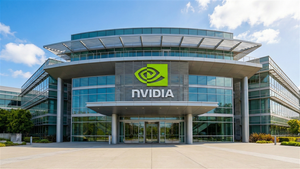
October 6, 2025, proved to be a day of significant volatility and strategic shifts across various sectors, as key public companies experienced dramatic midday stock movements. From groundbreaking AI partnerships and major banking acquisitions to government interest in critical minerals and analyst downgrades, the market reacted swiftly to a flurry of corporate news. These movements have not only reshaped investor perceptions of individual companies but also hinted at broader trends influencing the technology, financial, and retail landscapes, setting the stage for potential long-term implications.
A Day of Diverse Catalysts and Immediate Market Reactions
The midday trading session on October 6, 2025, was marked by distinct and powerful catalysts driving the fortunes of several prominent companies. Each movement, whether a meteoric rise or a notable decline, was a direct response to specific corporate actions or influential analyst opinions, showcasing the market's immediate sensitivity to new information.
Critical Metals (NASDAQ: CRML) witnessed a dramatic surge in its stock price, soaring by as much as 75% to $14 on the Nasdaq, and briefly touching an intraday high of $16.68. This explosive growth was initially fueled by reports suggesting that the U.S. government was considering acquiring a stake in the company or converting a $50 million government grant into equity. Further bolstering investor confidence, Critical Metals announced a private investment in public equity (PIPE) transaction, raising $35 million from an institutional investor. However, a subsequent Bloomberg report, citing a White House official denying such plans, led the stock to pare some of its earlier gains, illustrating the market's cautious approach to unconfirmed high-impact news.
In the financial sector, Comerica (NYSE: CMA) experienced a significant positive movement, with its stock jumping approximately 16% to trade at $81.85. This substantial increase was a direct consequence of the announcement that Fifth Third Bancorp (NASDAQ: FITB) had agreed to acquire Comerica in an all-stock deal valued at $10.9 billion. The acquisition price, representing $82.88 per share for Comerica stockholders, offered a premium of over 17% compared to its closing price on October 3, 2025. This move signals a notable consolidation within the regional banking sector, poised to create one of the largest U.S. banks.
Meanwhile, Advanced Micro Devices (NASDAQ: AMD) captivated the technology world with an explosive midday rally, with its stock initially opening more than 30% higher and hitting an all-time high of over $226 per share. The driving force behind this unprecedented surge was the announcement of a landmark multi-year agreement with OpenAI. Under this deal, AMD will supply 6 gigawatts of its powerful GPUs to support OpenAI's rapidly expanding AI infrastructure. Crucially, OpenAI will also receive warrants for up to 160 million AMD shares, potentially securing a nearly 10% ownership stake in the semiconductor giant. This strategic partnership is projected to generate tens of billions of dollars in revenue for AMD.
Conversely, Abercrombie & Fitch (NYSE: ANF) faced a negative midday movement, with its stock declining by more than 6% to trade at $78.51. This downturn was primarily attributed to a downgrade by JPMorgan Chase, which revised its rating on the apparel retailer's stock from "overweight" to "neutral." Such analyst actions often trigger immediate sell-offs as institutional investors and traders adjust their positions based on revised outlooks from major financial institutions.
Unpacking the Potential Winners and Losers
The midday market shifts on October 6, 2025, clearly delineated potential winners and losers, with significant implications for their respective industries and future trajectories.
Advanced Micro Devices (NASDAQ: AMD) stands out as the unequivocal winner of the day. The monumental deal with OpenAI not only validates AMD's advancements in AI-specific hardware but also firmly positions it as a formidable challenger to Nvidia (NASDAQ: NVDA) in the burgeoning AI semiconductor market. This partnership is expected to unlock massive revenue streams, potentially reshaping the competitive landscape and accelerating AMD's market share growth in high-performance computing and AI. The stock's dramatic ascent reflects strong investor confidence in AMD's long-term strategic positioning and its ability to capitalize on the insatiable demand for AI infrastructure.
Comerica (NYSE: CMA) shareholders are also clear winners, benefiting from the substantial premium offered by Fifth Third Bancorp. The acquisition provides an immediate and significant return on investment, reflecting the strategic value Comerica brings to the combined entity. While Comerica as an independent entity will cease to exist, its investors are handsomely rewarded, and the combined bank is expected to achieve greater scale and operational efficiencies.
Critical Metals (NASDAQ: CRML) initially appeared to be a major winner, with its stock soaring on the back of potential government interest and a capital injection. Government backing, especially in the critical minerals sector, can significantly de-risk projects and provide a stable foundation for growth. The $35 million PIPE further strengthens its balance sheet. However, the subsequent denial by the White House introduced uncertainty, causing the stock to pare some gains. While the long-term outlook for critical minerals remains strong due to global demand for renewable energy and electric vehicles, the immediate volatility highlights the risks associated with speculative news. The company's ability to secure stable funding and execute its projects will be crucial in determining whether it can sustain its elevated valuation.
Abercrombie & Fitch (NYSE: ANF), however, found itself on the losing end of the midday trading. The downgrade by JPMorgan Chase signals a revised outlook on the company's growth prospects or market position within the highly competitive retail apparel sector. Analyst downgrades can trigger a negative feedback loop, leading to decreased institutional interest and further selling pressure. For Abercrombie & Fitch, this could mean increased scrutiny on its sales performance, inventory management, and ability to adapt to evolving consumer preferences. The company will need to demonstrate resilience and clear strategic direction to regain investor confidence and counteract the negative sentiment.
Broader Market Implications and Industry Ripple Effects
The midday events of October 6, 2025, are not isolated incidents but rather significant indicators of broader trends shaping the financial markets, with potential ripple effects across various industries.
The Advanced Micro Devices (NASDAQ: AMD) and OpenAI deal underscores the accelerating arms race in artificial intelligence. This partnership intensifies the competition in the AI chip market, directly challenging Nvidia's (NASDAQ: NVDA) long-held dominance. As AI capabilities become central to technological advancement, demand for high-performance GPUs will only grow, creating immense opportunities but also putting pressure on other semiconductor manufacturers to innovate rapidly. This trend could lead to increased R&D spending across the industry and strategic alliances between chipmakers and AI developers, driving further consolidation or specialization. The sheer scale of the AMD-OpenAI deal also highlights the massive infrastructure investments required for advanced AI, potentially benefiting data center operators and energy providers in the long run.
In the banking sector, the acquisition of Comerica (NYSE: CMA) by Fifth Third Bancorp (NASDAQ: FITB) is indicative of an ongoing consolidation trend among regional banks. Faced with increasing regulatory burdens, technological investment demands, and competitive pressures from larger national banks and fintechs, smaller and mid-sized banks are finding strategic mergers and acquisitions an attractive path to achieve scale, diversify revenue streams, and enhance operational efficiency. This trend is likely to continue, potentially leading to fewer, but larger and more resilient, regional banking institutions. Such consolidation can have implications for local communities, credit availability, and the competitive landscape for banking services.
The volatility surrounding Critical Metals (NASDAQ: CRML) reflects the strategic importance and geopolitical sensitivity of critical minerals. As global supply chains are re-evaluated and nations prioritize energy transition and technological independence, the secure sourcing of materials like lithium, cobalt, and rare earths becomes paramount. Government interest, whether through direct investment or strategic partnerships, highlights efforts to bolster domestic supply chains and reduce reliance on foreign sources. This trend will likely continue to attract significant investment into exploration, mining, and processing of critical minerals, but also introduce regulatory complexities and environmental considerations. The market's reaction to unconfirmed government involvement also points to the high-stakes nature of this sector, where policy shifts can have immediate and profound impacts on valuations.
Finally, the downgrade of Abercrombie & Fitch (NYSE: ANF) by JPMorgan Chase is a reminder of the enduring challenges in the retail apparel sector. Consumer spending patterns, fast-changing fashion trends, and intense competition from e-commerce players and fast-fashion brands continue to create a dynamic and often unforgiving environment. Analyst downgrades often reflect concerns about sales growth, margin pressures, or a company's ability to adapt its business model. This event signals that even established brands must constantly innovate, optimize their supply chains, and maintain strong brand relevance to thrive in a market where consumer loyalty can be fleeting. It also underscores the power of institutional analysis in shaping market sentiment and stock performance.
The Road Ahead: Navigating Future Opportunities and Challenges
The midday market events of October 6, 2025, have set the stage for several short-term and long-term possibilities, presenting both opportunities and challenges for the involved companies and the broader market.
For Advanced Micro Devices (NASDAQ: AMD), the partnership with OpenAI marks a pivotal moment. In the short term, the company will focus on scaling production of its GPUs to meet OpenAI's massive demand, which could lead to significant revenue boosts in upcoming quarters. Long-term, this deal cements AMD's position as a leading AI hardware provider, opening doors for further partnerships with other AI innovators. Investors should watch for AMD's execution on this agreement, its ability to innovate further in AI chip design, and its overall market share gains against Nvidia (NASDAQ: NVDA). The potential for OpenAI to convert its warrants into a significant ownership stake also introduces a unique dynamic, aligning the interests of two tech powerhouses.
Comerica (NYSE: CMA) will now enter a transition phase as it integrates with Fifth Third Bancorp. In the short term, the focus will be on regulatory approvals and ensuring a smooth operational merger. Long-term, the combined entity aims to leverage increased scale, diversified services, and cost synergies to enhance profitability and market presence. Investors in the new entity will need to monitor the integration process, potential cost savings, and the combined bank's performance in a competitive financial landscape. The success of the merger will depend on effective cultural and operational alignment.
Critical Metals (NASDAQ: CRML) faces a nuanced path forward. Short-term, the stock's volatility will likely persist as the market seeks clarity on potential government involvement and the actual impact of the PIPE transaction. Long-term, the company's success hinges on its ability to develop its critical mineral projects efficiently and cost-effectively, securing stable off-take agreements, and navigating environmental and regulatory hurdles. Investors should watch for concrete announcements regarding government support, progress in project development, and the overall demand and pricing trends for critical minerals. The strategic importance of its resources, however, positions it well for future growth if it can execute its plans.
For Abercrombie & Fitch (NYSE: ANF), the immediate challenge is to address the concerns raised by the JPMorgan Chase downgrade and restore investor confidence. Short-term, the company may need to provide clearer guidance on its sales outlook and profit margins. Long-term, Abercrombie & Fitch must continue to evolve its brand, product offerings, and omnichannel strategy to remain relevant and competitive in a rapidly changing retail environment. This might involve further investment in e-commerce, supply chain optimization, and targeted marketing campaigns. Investors should closely monitor upcoming earnings reports for signs of improved performance and strategic clarity.
A Dynamic Market Landscape: Key Takeaways and Future Watchpoints
The midday trading on October 6, 2025, served as a potent reminder of the dynamic and often unpredictable nature of financial markets, where corporate strategy, technological breakthroughs, and analyst sentiment can trigger immediate and substantial shifts in valuation.
The key takeaway is the profound impact of strategic partnerships and M&A activity in driving significant value creation, as evidenced by AMD's landmark deal with OpenAI and Comerica's acquisition by Fifth Third Bancorp. These events highlight the ongoing realignment of industries in response to technological innovation and the pursuit of scale. Conversely, the swift market reaction to an analyst downgrade for Abercrombie & Fitch underscores the continued influence of institutional research and the challenges faced by companies in highly competitive sectors. The saga of Critical Metals also illustrates the double-edged sword of speculative news and the critical role of government policy in emerging, strategically vital industries.
Moving forward, investors should assess the market with a keen eye on several watchpoints. In the technology sector, the battle for AI dominance will intensify, making it crucial to monitor further developments in AI chip technology and strategic collaborations. In banking, the trend of regional bank consolidation is likely to continue, prompting investors to evaluate potential acquisition targets and the integration success of merged entities. For critical minerals, government policies, geopolitical developments, and project execution will be paramount in determining long-term viability. Finally, the retail sector will remain a battleground for consumer attention and spending, requiring companies to constantly adapt and innovate.
The events of this midday session reinforce the need for diligent research, a clear understanding of company-specific catalysts, and an awareness of broader industry trends. As the market continues to evolve, adaptability and strategic foresight will be key for both companies and investors navigating the opportunities and challenges that lie ahead.
This content is intended for informational purposes only and is not financial advice





